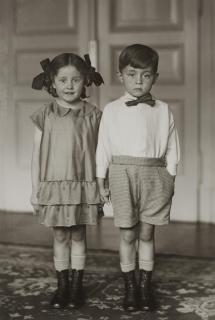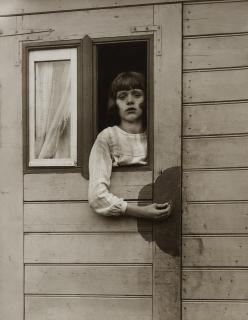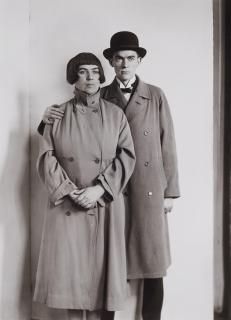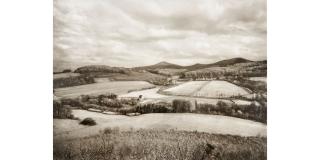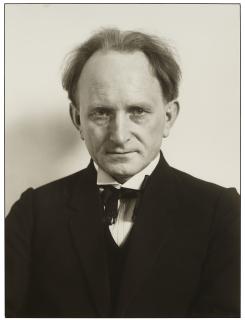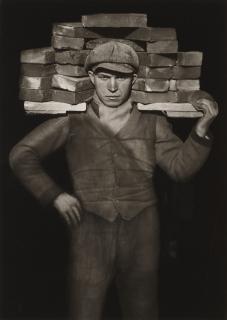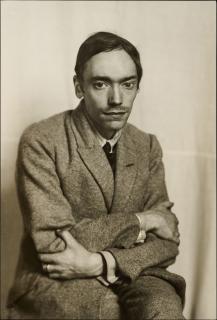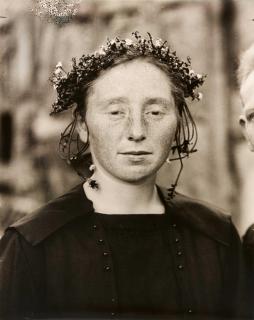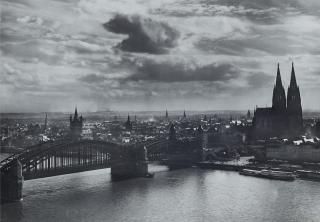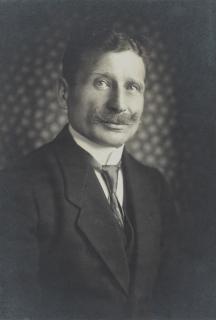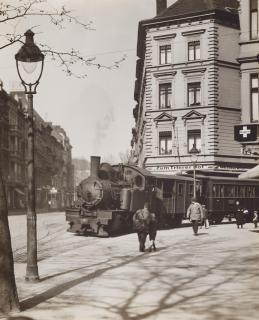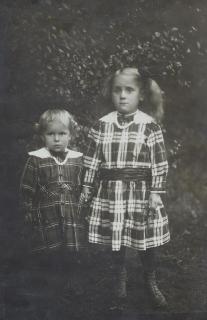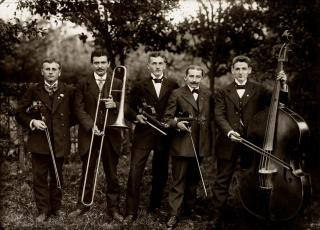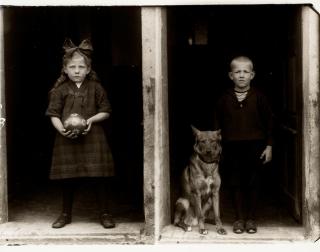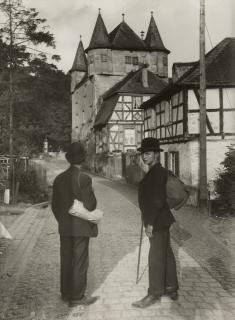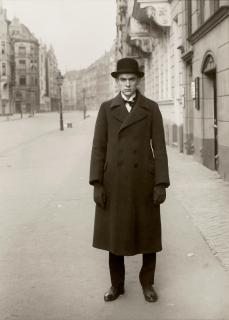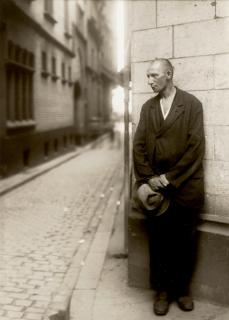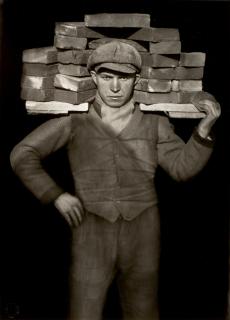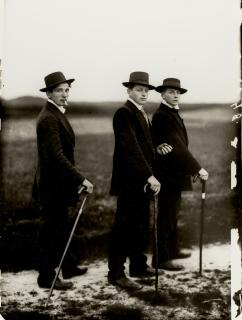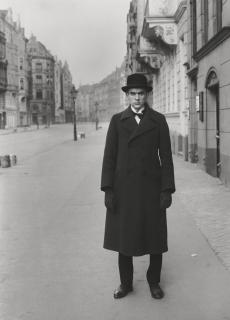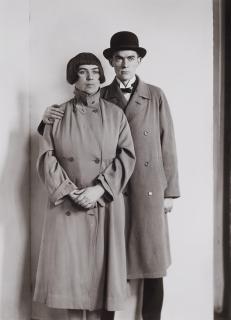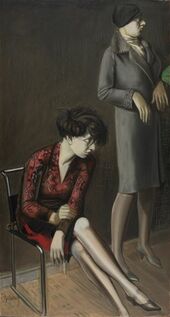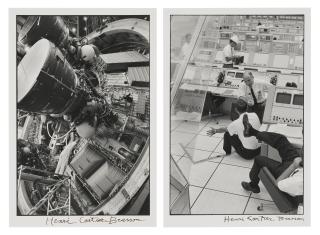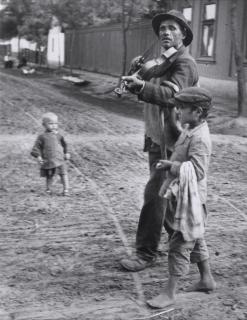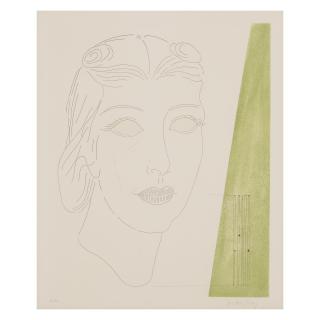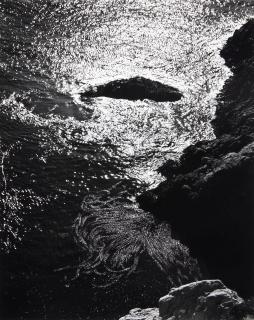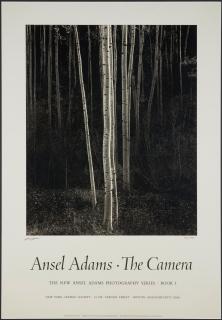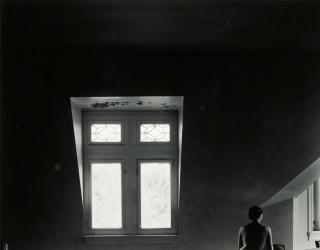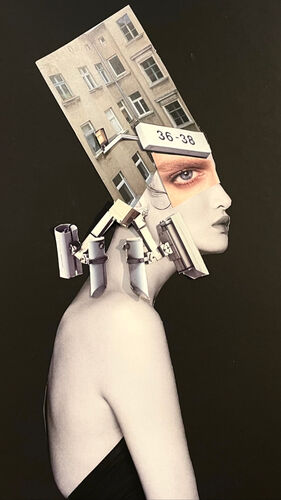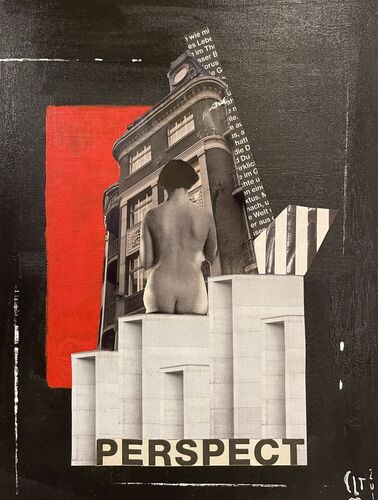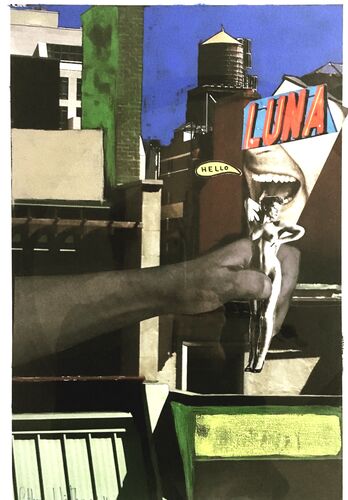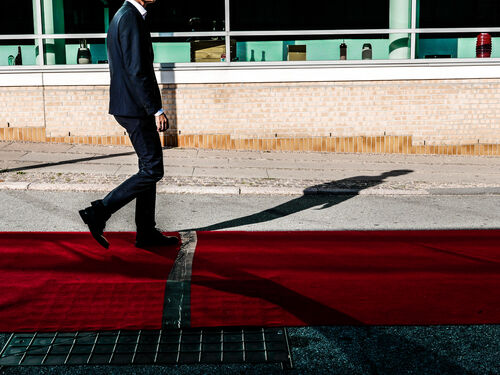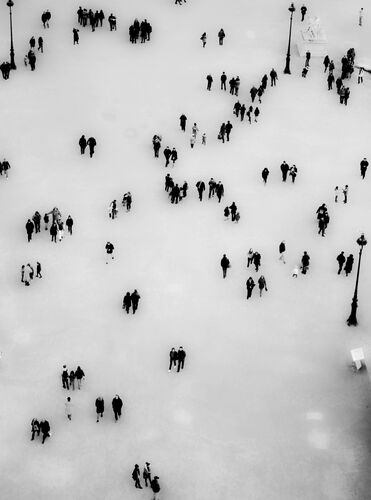August Sander 1876 - 1964
The artist August Sander
- One of the most important photographers of the 20th century.
- His work »People of the 20th Century« revolutionized portrait photography.
- Had close ties to Cologne: documented the city before and after the war.
People of the 20th Century is an unparalleled photographic work: Its creator August Sander revolutionized portrait photography in a lasting way and is therefore one of the most important photographic positions of the past century. Born in 1876 in Herdorf, Rhineland-Palatinate, the photographer met a professional photographer from Siegen in his early years, shortly after leaving school - the acquaintance is now regarded as the most likely key experience for his later career. After the encounter, Sander bought himself some photographic equipment, later worked in Georg Jung's studio during his military service in Trier, went on the road for two years and attended at least one painting school - this period could only be reconstructed from his son's accounts. In 1901 he finally came to the Photographische Kunstanstalt Greif in Linz on the Danube, where he took over the studio just one year later. In 1909 he, his wife and his meanwhile two sons moved to Cologne.
With the dawn of the new decade and the new start in the Rhenish metropolis, Sander laid the foundation for his later series People of the 20th Century. Thus, the first copies of the portraits were created in the Westerwald. In the 1920s, Sander cultivated contacts with important artists of the time. 1927 was finally to be the year that brought about the great turning point for Sander's career and the history of portraiture: the public saw the revolutionary series Menschen des 20. Jahrhunderts for the first time at the Kölnischer Kunstverein. Unfortunately, Sander was also one of those artists who were a thorn in the side of the National Socialists, and so right at the beginning of the takeover, all the printing blocks were destroyed and an exhibition stop of his works was ordered.
Especially during and shortly after the war, Sander suffered many strokes of fate, which were anything but beneficial for his photographic work. In 1942 he fled with his family to the Westerwald village of Kuchhausen, his studio in Cologne fell victim to the bombing raids of 1944, while his son Erich died of a ruptured appendix in the Siegburg penitentiary - shortly before his release. Erich Sander had been considered one of the leading figures of the SAPD (Socialist Workers' Party of Germany), which had been banned since 1933. In 1946, between 25,000 and 30,000 of Sander's negatives burned in a house fire in the basement of his Cologne apartment. Immediately after the end of the war, the photographer began documenting the destroyed Cologne.
In the 1950s, at the time of the economic miracle and reconstruction, Sander's career flourished in sync with the German economy: he received a retrospective at the second photokonia in Cologne, and in 1952 the director of the photographic department of the Museum of Modern Art in New York purchased 50 images from Sander's archive. In 1955, he benefited from the recognition of this MoMa director: three of his works became part of the traveling exhibition The Family of Man. His adopted city of Cologne also paid homage to his work by acquiring the work Cologne, which shows the city from 1920 until the beginning of the war. Sander's international fame did not reach him until the end of his life, however: in 1964, the 88-year-old died as a result of a stroke. He was buried at his son's side in the famous Melaten cemetery in Cologne.
Der Künstler August Sander
- Einer der bedeutendsten Fotografen des 20. Jahrhunderts.
- Sein Werk »Menschen des 20 Jahrhunderts« revolutionierte die Porträtfotografie.
- Hatte eine enge Bindung zu Köln: dokumentierte die Stadt vor und nach dem Krieg.
Menschen des 20 Jahrhunderts ist ein fotografisches Werk sondergleichen: Urheber August Sander revolutionierte die Porträtfotografie damit nachhaltig und zählt aufgrund dessen zu den wichtigsten Fotografiepositionen des vergangenen Jahrhunderts. Der 1876 in Herdorf, Rheinland-Pfalz, geborene Fotograf lernte in frühen Jahren, kurz nach seinem Schulabschluss, einen Siegener Berufsfotografen kennen – die Bekanntschaft wird heute als wahrscheinlichstes Schlüsselerlebnis für seinen späteren Berufsweg gewertet. Sander kaufte sich nach der Begegnung eine Fotoausrüstung, arbeitete später während seines Militärdienstes in Trier im Atelier von Georg Jung, ging zwei Jahre auf Wanderschaft und besuchte mindestens eine Malschule – diese Zeit konnte nur aus den Erzählungen seines Sohnes rekonstruiert werden. 1901 kam er schließlich an die Photographische Kunstanstalt Greif in Linz an der Donau, wo er schon ein Jahr später das Atelier übernahm. 1909 ging es für ihn, seine Frau und seine mittlerweile beiden Söhne nach Köln.
Mit Anbruch des neuen Jahrzehnts und dem Neustart in der rheinischen Großstadt legte Sander den Grundstein für seine spätere Serie Menschen des 20 Jahrhunderts. So entstanden im Westerwald erste Exemplare der Porträts. In den 1920er Jahren pflegte Sander Kontakte zu wichtigen Künstlern dieser Zeit. 1927 sollte schließlich das Jahr werden, das die große Wende für Sanders Karriere und die Porträtgeschichte mit sich brachte: Die Öffentlichkeit sah zum ersten Mal die revolutionäre Serie Menschen des 20. Jahrhunderts im Kölnischen Kunstverein. Leider war auch Sander einer jener Künstler, die den Nationalsozialisten ein Dorn im Auge waren, und so wurden gleich zu Beginn der Machtübernahme sämtliche Druckstöcke zerstört und ein Ausstellungsstopp seiner Arbeiten angeordnet.
Besonders während und kurz nach dem Krieg erlitt Sander viele Schicksalsschläge, die auch für sein fotografisches Schaffen alles andere als zuträglich waren. 1942 floh er mit seiner Familie in das Westerwalddorf Kuchhausen, sein Atelier in Köln fiel den Bombenangriffen von 1944 zum Opfer, während sein Sohn Erich im Zuchthaus Siegburg an einem Blinddarmdurchbruch starb – kurz vor seiner Entlassung. Erich Sander hatte als eine der Leitfiguren der ab 1933 verbotenen SAPD (Sozialistischen Arbeiterpartei Deutschlands) gegolten. 1946 verbrannten zwischen 25.000 und 30.000 der Negative Sanders im Keller der Kölner Wohnung bei einem Hausbrand. Unmittelbar nach Kriegsende begann der Fotograf mit der Dokumentation des zerstörten Kölns.
In den 1950ern, zu Zeiten des Wirtschaftswunders und des Wiederaufbaus, florierte Sanders Laufbahn synchron zur deutschen Wirtschaft: Auf der zweiten photokonia in Köln erhielt er eine Retrospektive, 1952 kaufte der Direktor der fotografischen Abteilung des Museum of Modern Art in New York 50 Bilder aus Sanders Archiv. 1955 partizipierte er von der Anerkennung dieses MoMa-Direktors: Drei seiner Werke wurden Teil der Wanderausstellung The Family of Man. Auch seine Wahlheimat Köln huldigte seine Arbeit, indem sie das Werk Köln, das die Stadt von 1920 bis zum Kriegsbeginn zeigt, erwarb. Sanders internationaler Ruhm erreichte ihn allerings erst an seinem Lebensabend: 1964 verstarb der 88-Jährige an den Folgen eines Schlaganfalls. Er wurde an der Seite seines Sohnes auf dem bekannten Kölner Friedhof Melaten beigesetzt.
August Sander in a nutshell
Referring to his groundbreaking series of photographs Menschen des 20. Jahrhunderts (People of the 20th Century), which first appeared in book form in 1929 under the title Antlitz der Zeit (Face of Time), Sander described his work in his 1931 lecture Wesen und Werden der Photographie (Essence and Development of Photography) with the following words: »[It] is nothing else than a commitment to photography as a world language and the attempt to create a physiognomic contemporary image of the German human being, which is based on the chemical-optical development of photography, in other words, pure light design.«
Sander took an almost scientific approach to his photography. he photographer describes pure light design also as Exact Photography – for him, the medium was supposed to document, to function as a scientific tool. Sander discovered how well it worked for posterity, to provide historical context. He used the series for comparative vision, his intention of a physiognomic picture of time, he adopted from science. Only many people next to each other can represent the image of a society, and »this image of time becomes even more comprehensible[,] if we line up photos of types of the most diverse groups of human society,« he explained in 1931 in the lecture Wesen und Werden der Photographie. His work was to take on a downright cultural-historical dimension.
Häufige Fragen zu August Sander
Bezogen auf seine bahnbrechende Fotoreihe Menschen des 20. Jahrhunderts, die 1929 zunächst unter dem Titel Antlitz der Zeit in Buchform erschien, schilderte Sander seine Arbeit im Vortrag Wesen und Werden der Photographie 1931 mit den folgenden Worten: »[Es] ist nichts anderes als ein Bekenntnis zur Photographie als Weltsprache und der Versuch, zu einem physiognomischen Zeitbild des deutschen Menschen, welches aufgebaut ist auf dem chemisch-optischen Werdegang der Photographie, also der reinen Lichtgestaltung.«
Sander verfolgte einen nahezu wissenschaftlichen Ansatz mit seiner Photografie. Die reine Lichtgestaltung beschreibt der Fotograf selbst auch als exakte Photographie – sie sollte dokumentieren, als wissenschaftliches Mittel fungieren. Sander entdeckte, wie gut das Medium für die Nachwelt funktionierte, die geschichtlichen Zusammenhänge zu erschließen. Er nutzte die Reihen für das vergleichende Sehen, sein Vorhaben eines physiognomischen Zeitbildes, entlehnt er der Wissenschaft. Nur viele Menschen nebeneinander können das Abbild einer Gesellschaft repräsentieren und »dieses Zeitbild wird noch verständlicher[,] wenn wir Photos von Typen der verschiedensten Gruppen der menschlichen Gesellschaft aneinanderreihen«, erläutert er in 1931 im Vortrag Wesen und Werden der Photographie. Sein Werk sollte eine regelrecht kulturhistorische Dimension einnehmen.
August Sander quotes
Zitate von August Sander
August Sander in News and Exhibitions
A time of turmoil, a time of innovation
Upheaval, awakening, innovation, freedom, the »Golden Twenties« and finally the demise – the Weimar Republic existed for only 15 years and yet it left behind a rich variety of ideas, such as the Neue Sachlichkeit (New Objectivity). The Louisiana Museum of Art in Humlebæk will be examining this period from October 14.
August Sander in News and Exhibitions
Zeit der Unruhe, Zeit der Innovation
Umbruch, Aufbruch, Innovation, Freiheit, die »Goldenen Zwanziger« und schließlich der Niedergang – die Weimarer Republik existierte nur 15 Jahre und doch hinterließ sie eine ideenreiche künstlerische Vielfalt, wie etwa die Neue Sachlichkeit. Mit ihr setzt sich das Louisiana Museum of Art in Humlebæk ab dem 14. Oktober auseinander.

